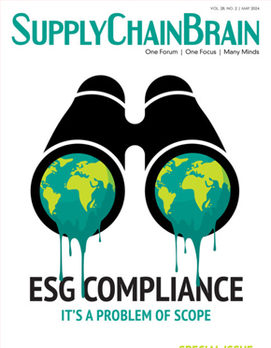
The key to mitigating abrupt and unexpected disruptions in any company’s global supply chain is timely, actionable information.
That includes systematic monitoring of key suppliers to keep abreast of any news affecting their sites that could lead to a disruption, such as labor unrest, natural disaster, armed conflict or epidemic. To avoid unwelcome surprises and supply-chain disruptions, organizations need to keep lines of communications open with suppliers, and build enough trust to encourage the sharing of important information.
The technology to accomplish that sort of communication is already widely available. According to the authors of a recent Harvard Business Review study on supply chains, artificial intelligence and natural-language processing have made supplier monitoring — which they describe as the bare minimum of what companies need to do — both affordable and readily accessible. Beyond that, some companies invest years in creating detailed heat maps of their supply chains, knowing which parts originate or pass through specific sites, frequently down to the third tier. Such knowledge can provide a company with enough lead time to carry out mitigation strategies in the event of a disruption.
But the question of whether or not advanced technologies have been installed for monitoring, while significant, isn’t really the thorniest issue in working with suppliers. That distinction goes to a pattern of adversarial business relationships, in which buyers routinely beat up their suppliers over price, and suppliers often return the compliment by increasing prices or extending delivery times whenever their goods are in short supply. It’s a sad fact that over the years, many companies have decided that their poor profitability isn’t really their own fault; it’s because of their suppliers, who must cut their prices no matter what their contracts might say.
A big part of rising above that acrimony involves looking at supplier relationships as collaborative enterprises in which customers and their suppliers see one another as partners, not adversaries. That can include negotiating adjusted payments which take into account a supplier’s short-term cash-flow challenges, urgent operational challenges, and other priorities — all considerations that could be amply rewarded through future business. But companies who see their supplier relationships as built on zero-sum negotiations will have a difficult time resetting those relationships.
At the same time, supply disruptions might not be the fault of a company’s favored supplier as much as of that supplier’s suppliers — the Tier 2 and Tier 3 sources of materials on which the Tier 1 supplier relies to produce its products. That’s because, as supply chains become more global, vulnerabilities have also grown and become harder to assess. A recent Dun & Bradstreet report found that while only 162 of the Fortune 1000 companies had Tier 1 suppliers in the Wuhan region of China, almost all of them — 938 of the top 1000 — had one or more Tier 2 suppliers there. But without good visibility into their supply chains, companies are unlikely to recognize their exposure to regional issues that could quickly turn around and hammer them.
What should we learn from this? One lesson is to apply the concept of diversification, proven in investment portfolio analysis, to supplier risk management. It teaches, for example, that having alternative suppliers on call to mitigate risk wouldn’t really matter if both are located in the same region, like Wuhan. Instead, procurement leaders need to make sure there is an authentic level of diversification within their supplier portfolios.
At the same time, there’s a significant gap in performance between leaders and laggards in procurement. Forrester conducted a study just before the pandemic which found that 93% of mature organizations regularly collaborated with their suppliers, but only 16% of beginning companies did so. Similar numbers applied to managing spend by category. It’s a gap that is expected to continue increasing, as advanced procurement organizations work toward new objectives and invest more in technology than laggards.
While narrowing the gap in supply chain resilience can be a long-term project, learning the risks of single (or non-diversified) sourcing shouldn’t be. It’s a lesson that has been repeated often enough to make its dangers clear to any procurement professional. Progress can be accelerated by implementing digital technology to enhance agility, improve access to valuable insights, expand staff capacity, identify important contractual issues, and help scale collaboration. While many procurement leaders have taken advantage of digital technology to extend their success, many others lag behind. With the prospect of recurring pandemics and other major disruptions a virtual certainty, there might still be time to do some catching up before the next disaster strikes.
Sundar Kamak is head of manufacturing solutions at Ivalua.







